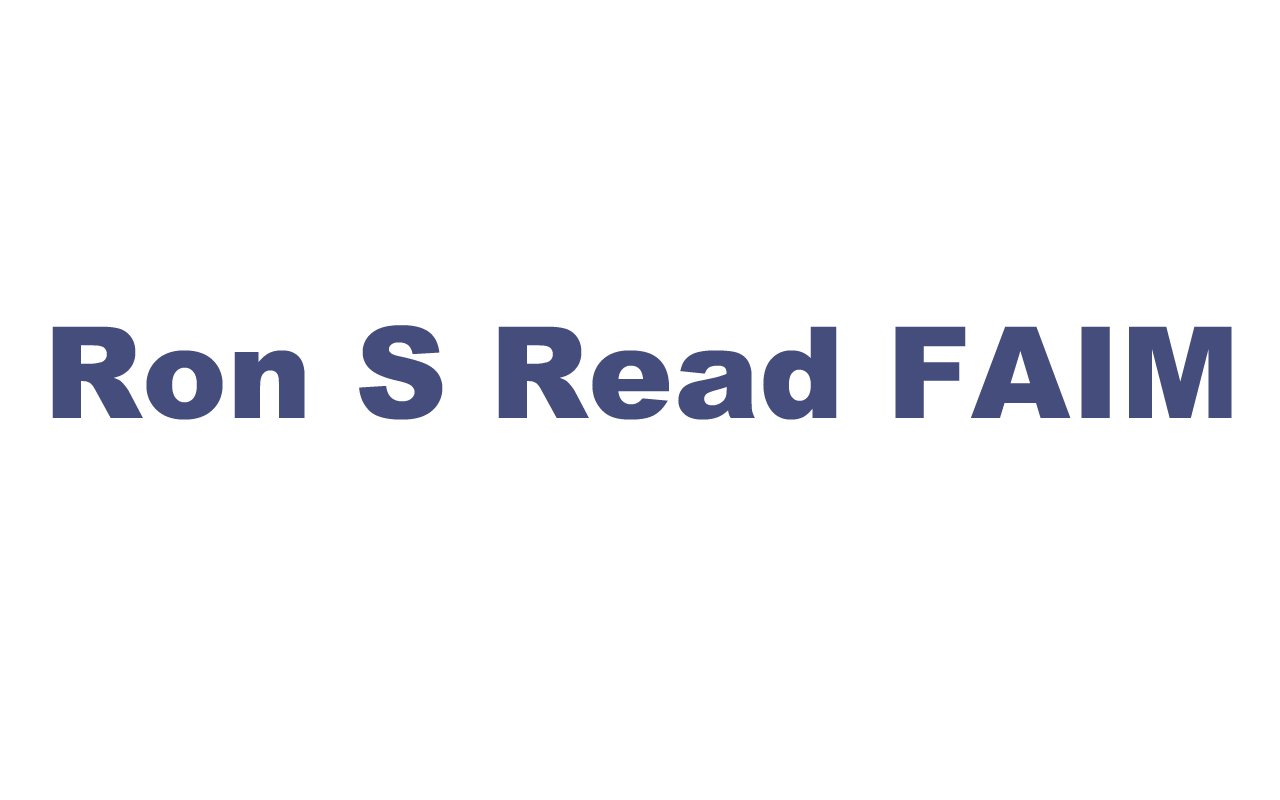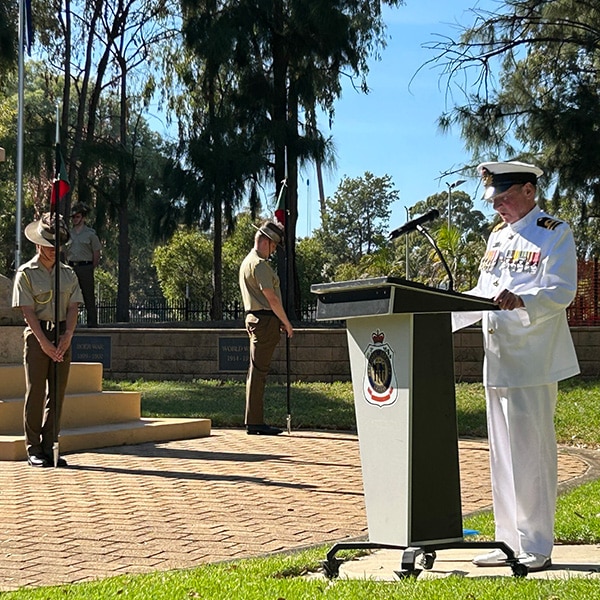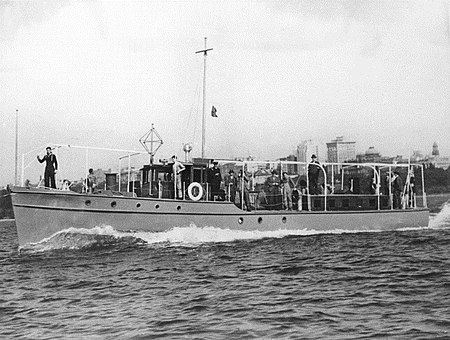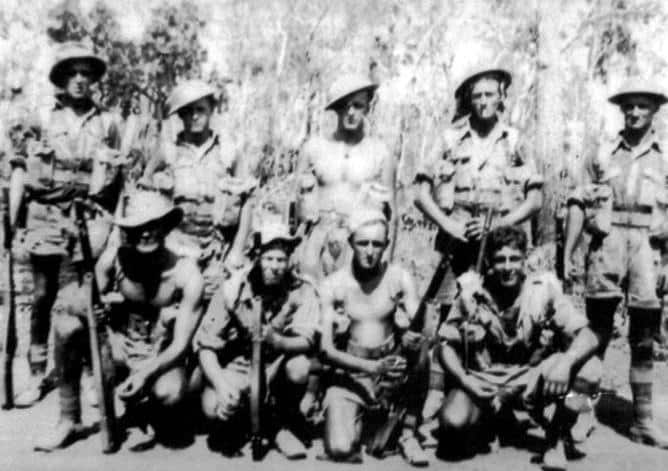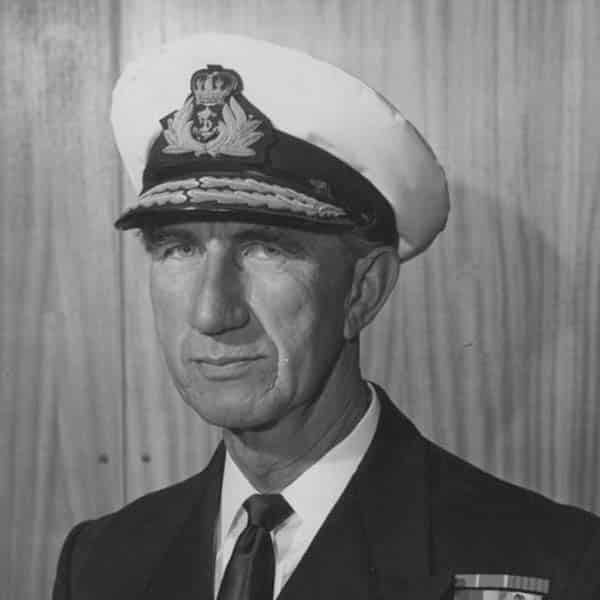This day, as it may for some of you, has special significance for me because my late father was in Darwin on February 19.
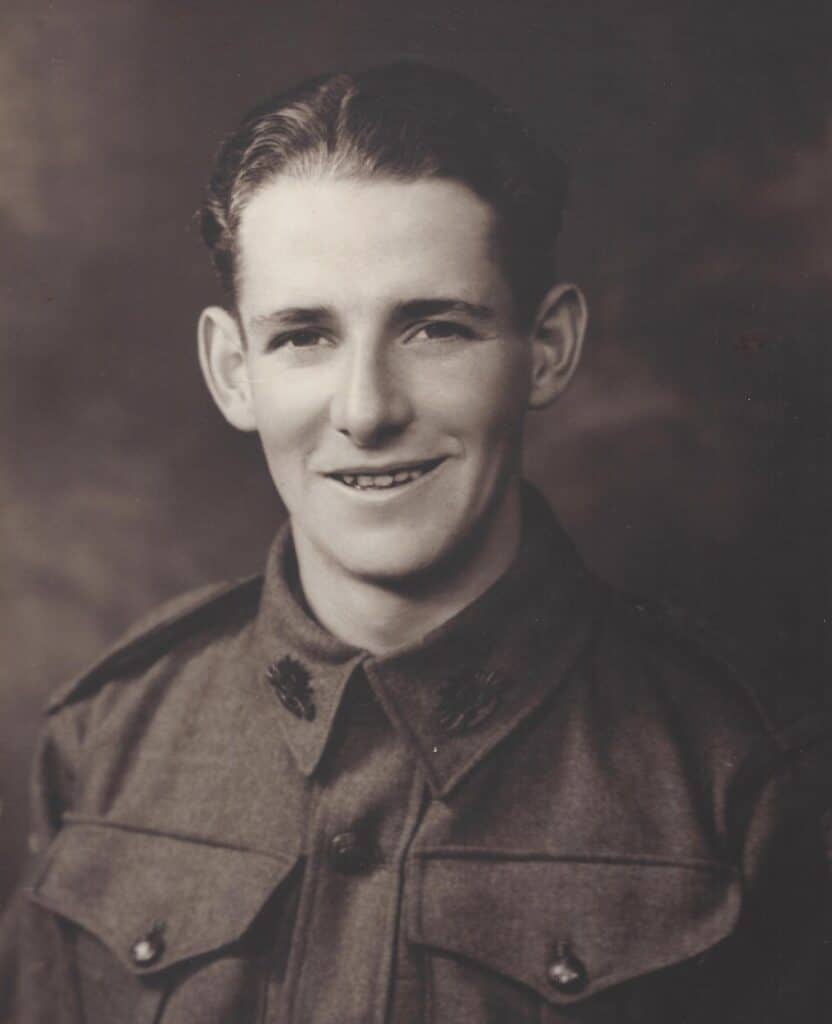
Private John Read was one of several hundred soldiers sent to Darwin in December 1941 and January 1942, immediately following our federal governments correct assumption that Darwin may well be a target!
But – WHY Darwin?
Imperial Japan had begun their Empire expansion by way of coup d’etat way back in 1930 – attacking Russia on 3 x fronts, and then in 1932, they brutally attacked and occupied Manchuria, where they even installed a military government.
But they were not stopping there, as they were pursuing the remainder of China and French Indo-China as well.
When the United States requested and later demanded that Japan END its war with China and French Indo-China – and they refused, President Roosevelt placed an oil and steel embargo on Japan.
When the embargo became effective, Japan’s military oil reserves were down to about six month’s supply!
Clearly – Japan needed oil – and their obvious source would be the Dutch East-Indies – Java and Borneo primarily – but they would first have to capture and occupy these territories to get it!
Japan was very aware of the significance of the United States Navy Pacific Fleet based in Pearl Harbor and determined that it would have to be destroyed, or at least rendered inoperable long enough for them to consolidate their Empire expansion which would include the capture of the Dutch East Indies for Oil and British Malaya for their rubber and tin

So, as you know, on the morning of Sunday, December 7, 1941, Japan attacked Pearl Harbor.
This attack immediately brought the United States into the war and furthermore, the Second World War had now become a global conflict.
Japan also knew that Australia’s northern ports had to be neutralized and the Islands above Australia had to be seized and occupied, if they were to be successful capturing and occupying the Dutch East Indies and British Malaya, as well as many other territories on their radar.
This meant Darwin had to be conquered because Japan’s military intelligence already knew that Allied bombers operating from Darwin, and from other northern Australia bases would be well in range of their own invading forces just a few hundred miles to the north.
They had conducted several air recon missions over Darwin, so they knew their targets.
Japan would use the same Task Force with the same leaders who started the Pacific War just 74 days earlier with the attack on Pearl Harbor.
By late January 1942, this TF was now in the Timor Sea, and it comprised of:
4 x heavy carriers – 6 x heavy cruisers + 9 x destroyers
An operational order had been prepared which called for 188 carrier-borne aircraft for the first attack. This would be followed by 54 land-based level bombers departing from recently captured Ambon in the Celebes.
As I have mentioned already the imminence of an attack on Darwin, whether by air or by way of an invasion force had already been considered by our federal government immediately following the Pearl Harbor attack.
As a consequence, by February 18, 1942, the civilian population of Darwin had been reduced from over 5,000 to just over 2,000. This reduction occurred by way of government decree, requiring that women, children and the aged be evacuated by ship before Christmas 1941.
At this time also, hundreds of soldiers were transferred in.
As I have mentioned, my father who was an 18 year-old Private serving in the South Australian Militia AKA Citizens Military Forces (CMF) at this time, was one of them. He remained in Darwin during the ‘cleaning up and ‘rebuild’ for all of 1942, when he then at age 19, transferred to the 2nd A.I.F. and began his three rotations during the New Guinea campaigns.
Over the Christmas New Year period, the Soldiers were engaged in:
- Erecting barbed wire entanglements along the beaches
- Arming and testing the concrete machine gun emplacements surrounding the harbor and the city.
And, the Attack came at 09:58 on the morning on February 19, 1942.
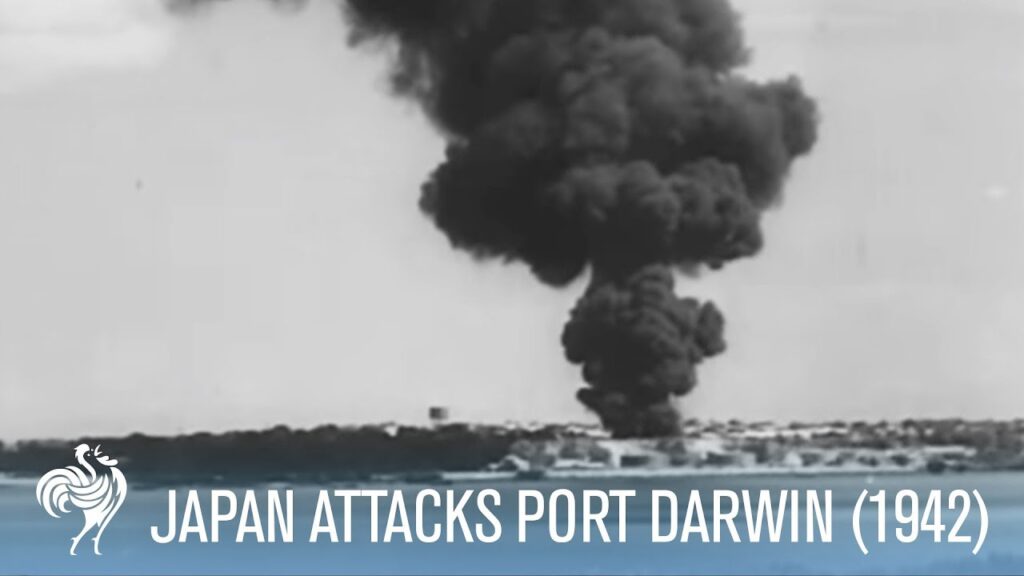
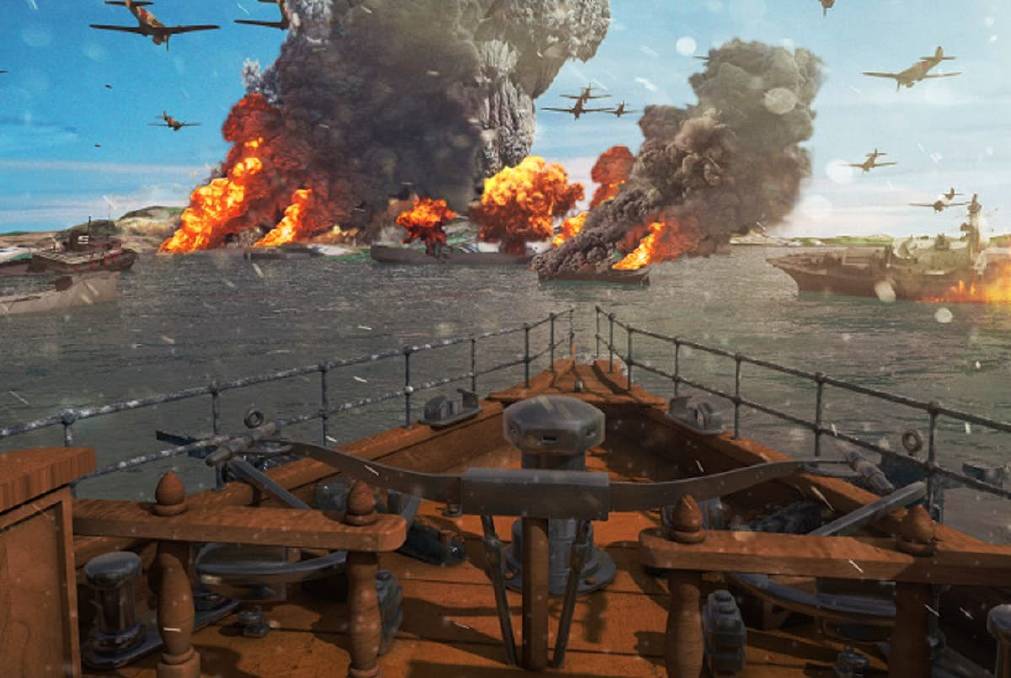
This is the day when war came to Australia
At this moment 70 water-side workers were already on duty in the holds of two ships alongside the wharves, and 22 of them would be killed instantly.
45 ships were moored in the harbor, and obviously they were stationery targets in which 172 lives would be lost, including 93 serving on-board the U S N destroyer USS Peary which sunk quickly following 4 x direct hits.
The Hospital Ship, Manunda was hit badly wounding sixty crew and nurses and injuring dozens more.
The Post Office staff had been issued with stamps and money orders and were about to begin serving the public.
Four would be soon dead.
Five women were also to die as they were manning the manually-operated telephone switchboard when the attack came.
At the Airport, 4 miles away, 10 x US fighters had just left for Java but they had turned back due to inclement weather. As they were preparing to land back in Darwin, all but one was shot to pieces.
As you can well imagine, destruction and terror were such as to lead to a panic, which further led to hundreds desperately fleeing on any moving vehicle they could find, including bicycles.
Many of those who didn’t flee, DIED including women and children whose bodies lay at the bottom of the harbor, or found soaking in oil drenched mud on the beaches, or they were lying shattered in inadequate shelters
On the ships alone, including the USS Peary plus some of their supply vessels, saw at last 172 killed in the first air attack. Another 19 would die of their wounds.
In addition, some 400 were wounded.
When 52 deaths among the civilians are added to the servicemen killed, the total comes to 243, but this has always been a very contentious number – as many believed it was considerably more, and it very likely was!
Interestingly more bombs were dropped in these two air attacks – 683 – than were dropped on Pearl Harbor!
In the harbor that day but not damaged were 23 other vessels of various types including 2 x Corvettes of the RAN.
By the time the bombers had turned back to their carriers, 9 ships had been sunk and a further 15 had been damaged.
20 Military aircraft were destroyed and Darwin’s infrastructure was in complete ruins.
Such destruction was brought by the Japanese Navy, swiftly and efficiently as it had been to Pearl Harbour just 74 days earlier.
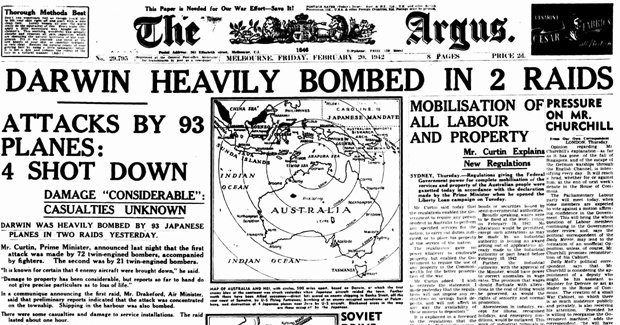
DARWIN on this day had become Australia’s Pearl Harbor.
The Imperial Japanese Navy went on the conduct a further 95 air-attacks on our northern cities and towns including;
- Townsville, Mossman and Cape Horn in QLD
- Drysdale, Katherine, Port Patterson and Adelaide River in the NT
- Broome, Derby, Onslow, Wyndham, Port Hedland and Exmouth in WA.
The last air-attack on Australian soil came when Japanese Bombers attacked the power house at Adelaide River on 12 November 1943, almost 2 years after their first attack.
Lastly, Ladies and Gentlemen, allow me to conclude by saying:
If we don’t continue to preserve our history, we’ll actually end up in a poorer place in terms of educating and inspiring the next and ensuing generations. This is why the attacks on Darwin, and on our other northern cities and towns, with so many other campaigns that were fought so very close to our shores during the Second World War in the Pacific – must always be remembered.
So many young Australians in the prime of their life paid the ultimate price for our continued freedom – and so it will always be our duty to remember them, and this day, February 19th is certainly one of them!
Lest We Forget
Written & Spoken by: LEUT Ron S Read RAN (Rtd)
Adelaide SA
19 February, 2024
